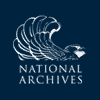Thursday 18th. Sat for Mr. Trumbull from nine oclock till 10—after which exercised in the Post Chaise with Mrs. Washington. On our return home called on Mrs. Adams—Lady of the Vice-Presidt.
The following company dined here to day—viz—Judge Cushing and his Lady—The Post Master General & his Lady and Messrs. Boudinot, Griffin, Coles, Gerry and White and their Ladies.
Sent a Message to the Senate with the Copies of a Letter from the Governor of Massachusetts and a resolve of the Assembly of that State, respecting the disputed boundary between them and the British of Nova Scotia.
their ladies: Mrs. William Cushing was Hannah Phillips Cushing (c.1754–1834) of Middletown, Conn. Mrs. Samuel Osgood was Mary Bowne Franklin Osgood, the widow of Walter Franklin (see entry for 1 Oct. 1789). Mrs. Elias Boudinot was Hannah Stockton Boudinot (1736–1808), daughter of John and Abigail Stockton of Princeton, N.J., and sister of Signer Richard Stockton. She had married Boudinot in 1762. Mrs. Samuel Griffin was Betsy Braxton Griffin (see entry for 10 Dec. 1789). Isaac Coles, United States representative from Virginia, had married Catharine Thompson, daughter of James Thompson, in Jan. 1790 (Pa. Packet, 7 Jan. 1790). Ann Thompson (d. 1849), daughter of New York merchant James Thompson and Catherine Walton Thompson, had married Elbridge Gerry in 1786. Mrs. Alexander White was Sarah Cotter Hite White (c.1750-1830).
The resolve of the Massachusetts legislature, 1 Feb. 1790, directed Gov. John Hancock to write to the president “informing him that the subjects of his Britannick Majesty have made and still continue to make encroachments on the eastern boundary of this Commonwealth, in the opinion of the Legislature, contrary to the treaty of peace.” Hancock wrote GW, 10 Feb. 1790, transmitting a number of documents supporting the legislature’s allegations. GW transmitted the resolve of the Massachusetts legislature and Hancock’s letter to the Senate, 18 Feb. 1790 (DNA: RG 46, Entry 11). The enclosures consisted of copies of some of the documents that had already been submitted to the Senate by GW on 9 Feb. 1790, in a report to the Senate “relative to differences with Great Britain respecting the Eastern Boundary” (see 1:90–99; , 2:359–87). The northeastern boundary dispute concerned some 7,500 square miles of land between the United States and New Brunswick; the boundary had been left unsettled at the Treaty of Paris in 1783 because of uncertainty as to the location of the river St. Croix which appeared on Mitchell’s Map and was used as the boundary line by the peace commissioners. Investigation in the area showed there was no St. Croix River in the vicinity of the stream marked on Mitchell’s Map. British negotiators held that the boundary line agreed upon at Paris was the Schoodiac River while the United States maintained it was the Magaguadavic, east of the Schoodiac (see , 1:5). The dispute on the location of the St. Croix was settled by arbitration in 1798, a mixed commission agreeing that the Schoodiac was the St. Croix on Mitchell’s Map.

![University of Virginia Press [link will open in a new window] University of Virginia Press](/lib/media/rotunda-white-on-blue.png)
